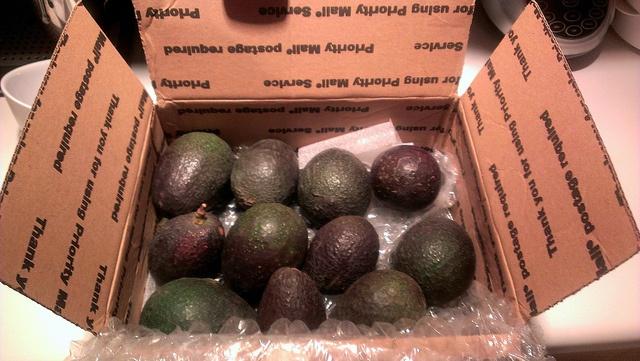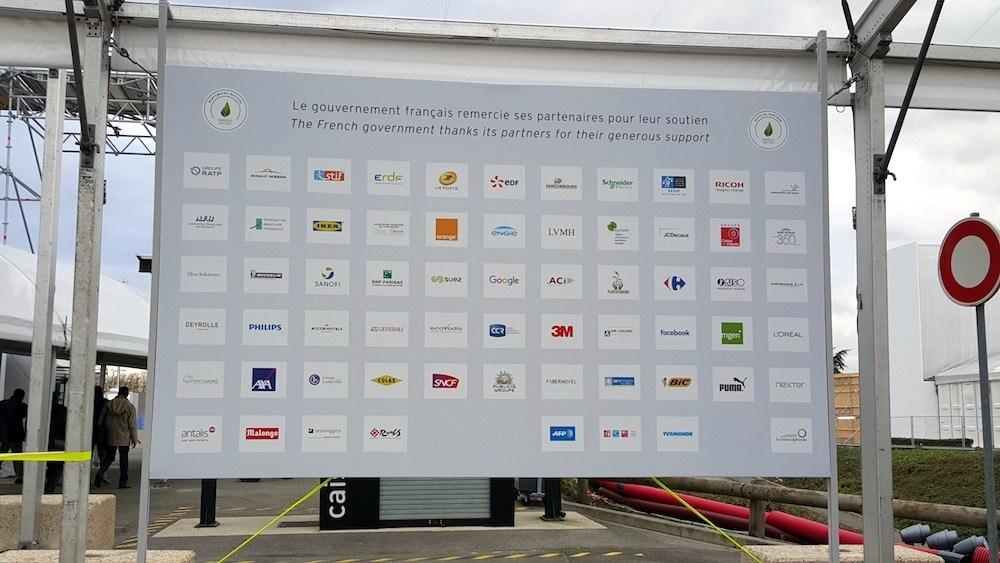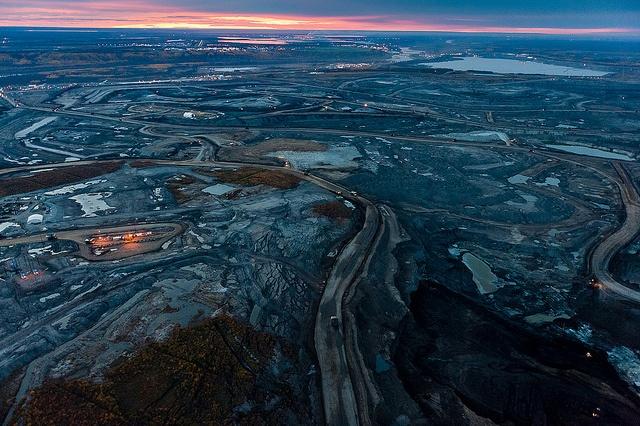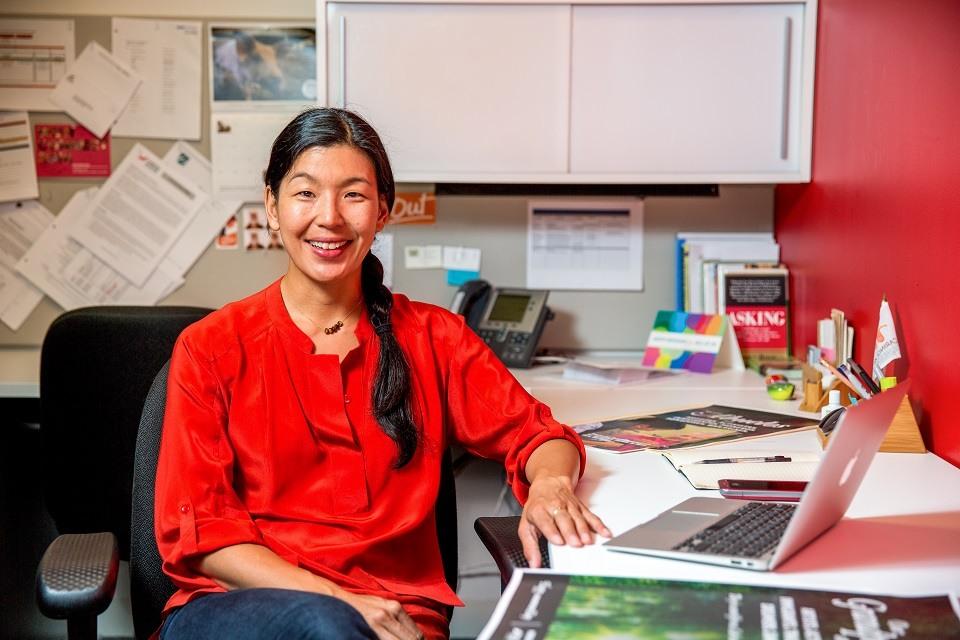Adidas steps up pace over ocean pollution with Parley


Sportswear giant Adidas and creative think tank Parley for the Oceans have showcased a new footwear concept, the 3D-printed Ocean Plastic shoe midsole, to demonstrate how the sportswear and fashion industries can re-think design and contribute to stop ocean plastic pollution.
Presented at an event at COP21, the concept shoe consists of an upper made with ocean plastic content and a midsole which is 3D printed using recycled polyester and gill net content.
"World leaders forging an agreement is wonderful, but we shouldn't need to be told to do the right thing. The industry can't afford to wait for directions any longer. Together with the network of Parley for the Oceans we have started taking action and creating new sustainable materials and innovations for athletes," said Eric Liedtke, adidas Group Executive Board member responsible for Global Brands.
"The 3D-printed Ocean Plastic shoe midsole stands for how we can set new industry standards if we start questioning the reason to be of what we create."
Not Just Bubble Wrap: Sealed Air's Diverse Food Care Program


What is more emblematic of the holiday season and anniversaries than that airy plastic cushioning we pawed through as kids to get to our favorite present or our favorite food? Bubble wrap, the stuff that is used in shipping, moving and storage to protect our most valuable possessions, was created for an oddly different purpose in mind more than 60 years ago. But today it's an almost indispensable material in both home and business. It's also been one of Sealed Air Corp.'s most popular products for decades, as one of the company's model examples of simple engineering and ingenuity
Sealed Air and shrink wrap
Cryovac, that air-tight wrapping that protects and cushions the turkeys we buy in the supermarket, also serves an important purpose when it comes to highly perishable products: It locks out bacteria. In many cases, it may look like the perfect, transparent method for showcasing that juicy steak or a selection of fresh fruit, but its real benefit, said Ronald Cotterman, Sealed Air's vice president of sustainability, is its hygienic properties."Cryovac was one of the early pioneers in developing [hygienic] solutions for food that would extend the shelf-life of food by basically by removing the air or the oxygen that surrounds that food and then sealing the package under vacuum." He added that this technique has "led to dramatic increases of the freshness and life of that food."
Cotterman said that studies conducted in New Zealand in early 2000, where the food-borne bacteria Campylobater is often a problem, showed that using barrier packaging like Cryovac served as an effective way to stop food contamination. The country made a number of changes to its poultry production guidelines, including introducing new packaging requirements.
"Within two years of implementing those guidelines," which included new hermetically-sealed packaging, Cotterman said, "the rate [of incidence] dropped by over half. So there are many, many studies like this that show where individual countries can implement improved hygiene and packaging standards and see dramatic results."
But Sealed Air's Food Care products have another benefit here in the U.S. as well, Cotterman said.
"Within the supply chain ... the USDA estimates about 4 percent of poultry is [lost] just because of the limits of their supply chain." He said hygienic food handling, an adequate cold chain that keeps the product sufficiently cold during transport and sophisticated packaging standards that cut down bacteria exposure is critical to reducing that food loss statistic.
Using packaging to reduce food waste
But the other factor that Sealed Air focuses on, Cotterman explained, is food waste: produce and other products that are discarded at the post-consumer stage because of expiration, spoilage or an overabundance of food. He said understanding consumer perceptions when it comes to food waste has been key to redesigning how the company addresses its packaging procedures.
Researchers tasked with interviewing households in the U.S., Brazil, Argentina and Mexico found some interesting statistics when it came to the perception of food waste and our collective role in reducing its prominence.
Reducing food waste isn't just dependent on smart buying habits, Cotterman said. It's also dependent on consumer perception.
"That's something we probed recently with a consumer survey," Cotterman continued. In this case, the company surveyed consumers from four countries: the U.S., Mexico, Brazil and Argentina. The results were surprising.
In the U.S., food safety was cited as consumers' No. 1 concern, and food waste as the second major concern. But when respondents were asked how concerned they were about food waste within their respective households, the food waste stats dropped dramatically.
"Whereas 63 percent of Americans reported that food waste was really important, within their own household, it dropped to 34 percent -- a really remarkable shift in perception."
That shift wasn't as evident in the responses in Brazil, Argentina and Mexico, where consumers seemed to have a more realistic view of the connection between national food waste and their own trash cans. Respondents in Mexico reflected the most pragmatism, with 79 percent expressing concern about the evidence of food waste and 62 percent admitting concern about food that is wasted in their own households. Brazil and Argentina showed a greater disparity with 89/70 percent and 76/42 percent respectively.
With changing demographics here in the U.S. that is shifting toward smaller family size, it makes sense to reexamine the way food is packaged, Cotterman continued. And yet, while households are shrinking, food portions, or what is purchased at the store, "haven't necessarily kept up with that."
New packaging alternatives
To address that problem, Sealed Air has come up with new packaging "saddle packs" that allow the consumer to purchase a set number of portions in ready-to-cook amounts, "so that you only open that portion you need." Cotterman pointed out that it's become a convenient option for poultry, which is highly susceptible to cross-contamination.
"Most consumers want to purchase their chicken fresh ... So, we did a lot of consumer research to figure out that this type of packaging would meet not only convenience [preferences], but would [also] be freezer-ready and reduce waste," Cotterman said.
A siimilar use of single-portion hermetically sealed packaging is often used for fish, where the servings are sold in a designated number of shrink-wrapped portions. The packaging allows the consumer to choose the number of portions for that night's dinner, and then pop the rest back in the freezer without having to defrost an entire fish.
He admitted that some consumers may not be happy with having more packaging. But reducing food waste, he argued, "tips the scale in a very favorable way in net reduction and total environmental impact."
Asked whether Sealed Air envisages moving away from fossil fuels in its packaging materials, he said "very active research" is underway to determine alternative sources for packaging. The company has come up with new biodegradable products for non-food uses, such as molded cushioning made out of food waste to replace some plastic products it makes, but ultimately it raises an important question about the use of food products for non-food purposes. The company has also found ways to reduce the amount of plastics it uses in products and is continuing its research into ways to boost the recyclability of its products in areas where landfills and other recycle depots don't take #4 plastics.
A bigger challenge, however, is ensuring that the plastic is sterile enough to be recycled. In many cases, Cotterman pointed out, Cryovac materials that have been used on meat and dairy products may not meet the "clean and dry" standards that are necessary for recycling. Another option the company is looking into is converting the plastics to fuel for transportation use.
In keeping with the current focus on sustainable business practices and this month's COP21 talks, the company has developed its own "big, bold and ambitious" sustainability goals. These goals include attaining a zero-landfill threshold; developing ethical sourcing practices that include a robust research and development process; and ensuring that its products have a social benefit by enhancing livelihoods, reducing cross-contamination and preventing disease in food products. And part of the path to those goals is training employees to serve as social ambassadors in the fight to reduce global food waste.
"We are working different channels," said Cotterman, to bring about a new thinking when it comes to food security and the critical need to drastically reduce food waste.
Images: 1) Sean Freese; 2) USDA (2); 3) Marissa Strniste; 4) Oatsy40
COP21: Brought to You By ... Big Polluters?


The world is coming together to try to build a clean energy future, but the UNFCC COP21 Paris climate talks themselves are being bankrolled by the very companies that got us into this mess.
That is according to a new report from Corporate Accountability International, which found that four French companies sponsoring the climate talks – Engie, EDF, Suez Environment and BNP Paribas – are responsible for more than $15 billion invested in the coal industry; and more than 200 megatons of CO2 equivalent emissions – more than the yearly output of all but 20 countries.
“Most of these companies are big emitters of the very greenhouse gases responsible for climate change, such as EDF or Engie whose coal plants alone are equivalent to nearly half of France's entire emissions,” said Malika Peyraut, of Friends of the Earth to DeSmogBlog. “Putting the most important climate conference of the decade under the patronage of climate-incompatible businesses does not bode well.”
Fossil fuels companies are also master lobbyists. In California, earlier this year, fossil fuel companies prevented SB 350 from including a 50 percent oil and gas reduction standard, a major victory for dirty energy. But they are also feeling the pressure. The divestment movement has moved an estimated $3.4 trillion away from fossil fuel companies, and here in the United States, coal companies are going bankrupt as clean, renewable energy becomes cheaper and cheaper.
“Inviting some of the world's biggest polluters to pay for the COP is akin to hiring a fox to guard a hen house. We must eliminate this conflict of interest before COPs become corporate tradeshows for false market-based solutions,” said Patti Lynn, executive director of Corporate Accountability International, in an email statement.
This comes on the heels of news that the New York State Attorney General will be suing one of America's largest fossil fuels companies – Exxon-Mobil – for its willful denial of climate sciences and climate action despite knowing of its validity for years.
“It’s an outrage that Exxon conspired to hoodwink the public on the reality of climate change, and their decision to do so has placed American lives in peril,” stated Anthony Rogers-Wright, policy director of Environmental Action, in a statement.
This is why CAI and several other NGOs are pushing for the climate talks to kick out big polluters, who have been standing against, not for, progress. It is because of them that we are facing such a huge challenge right now: preventing catastrophic climate change.
“The fossil fuel industry is actively lobbying against climate action and standing in the way of progress. When you’re trying to burn the table down, you don’t deserve a seat at it,” Hoda Baraka, global communications manager for 350.org, in a statement.
Let's hope -- for the sake of the world -- that the millions being spent by these dirty French companies has no impact on the talks.
Image credits: 1) Staplehunter 2) Mary Mazzoni
Alberta Declares Ambitious Climate Plan in Time for Paris


It would seem clear to anyone whose head is not buried in the sand (or is watching too much Fox News) that times and attitudes are changing. People are becoming more aware of the impact of human activity on the planet and beginning to take responsibility. If that awareness is not broadly clear across the U.S., it certainly is in the land up North.
Recent elections have swept out the oil-friendly regime of Stephen Harper and replaced him with Justin Trudeau, who won on a campaign that promised to end fossil fuel subsides and boost investment in renewables. But the return of liberal leadership to Ottawa, Canada, is not nearly as surprising as the changing of the provincial guard that occurred in Alberta, the world’s tar sands capital. The election of the New Democratic Party’s candidate, Rachel Notley, was declared by BBC News to be a “political earthquake.”
Why an earthquake? The last time the right-leaning Progressive Conservatives were not running the show in Alberta, Richard Nixon was still the U.S. president. Like Trudeau, Alberta’s Notley made dealing with climate change a central focus of her campaign. Not wasting any time, she unveiled a new climate action plan at the end of November, just days before the Paris climate summit. The plan includes an economy-wide carbon tax, putting a cap on emissions from oil sands developments, and phasing out coal-fired power plants by 2030. The strategy will also cut methane emissions 45 percent by 2025.
“This is the day we step up,” said Notley, “at long last, to one of the world’s biggest problems. This is the day we stop denying there is an issue. And this is the day we do our part.”
This, in the province that, with only 10 percent of the population, has long been Canada’s biggest greenhouse gas emitter. Notley’s stated goal: turn Alberta into “one of the world’s most progressive and forward-looking energy producers.”
The carbon tax of $30 per ton will be phased-in by January 2018, and is expected to bring in $3 billion in revenue. Notley stated that those funds would be invested in clean-technology research, public transportation and energy-efficiency programs. She also spoke of “rehabilitating the province’s environmental reputation.”
Acknowledging the changing sentiment, Tim McMillan, president of the Canadian Association of Petroleum Producers, said, “We expect today’s announcement to further enhance the reputation of our sector and improve our province’s environmental credibility as we seek to expand market access.”
Still, while these new aggressive targets might seem extreme to some, the cap on oil sands emissions, at 100 megatons, still leaves room for tar sands extraction, which emits 70 megatons today, to grow.
Like the agreement that is likely to emerge from the two-week summit in Paris, it won’t be everything that every environmentalist would like to see. But then it will most certainly be an important next step.
Meanwhile, in Paris this week, Prime Minister Trudeau said: “Indigenous peoples have known for thousands of years how to care for our planet. The rest of us have a lot to learn. And no time to waste.”
A number of indigenous leaders accompanied Trudeau to Paris, as part of his delegation.
Image credit Flickr/thekirbster
Making Zero-Deforestation Commitments Work


While most of the attention in Paris is on what's happening at COP21, dozens of other conferences, events and gatherings are taking place during December in the city. One of the largest is the Global Landscapes Forum (GLF), which has over 3,000 attendees looking at the scientific and policy implications of land use.
With agriculture alone accounting for over a quarter of global greenhouse emissions, the solutions being discussed here may well be critically important to the success of COP21 on the other side of the city.
This year, the biggest source of agricultural CO2 emissions were the horrific fires in Indonesia, which we covered extensively at TriplePundit. Not surprisingly, several sessions at the GLF were about palm oil, deforestation, fires and initiatives to prevent both from happening.
When the horrific fires broke out in Indonesia this past year -- driven, at least partially, though not entirely, by El Nino -- the blame was pointed at a whole host of figures. During a jam-packed session on zero-deforestation commitments, in which three of the panelists were Indonesian, the topic of palm oil, fires and complicity were fiercely debated by both panelists and those in the audience.
“We want to secure our supply,” said Tiur Rumondang, with the Indonesia Business Council on Sustainable Development, speaking on behalf of Indonesia's palm oil companies.
The reality is that palm oil is a complex commodity, with a long, interwoven supply chain that makes traceability difficult. Adding to the challenge is that, in Indonesia, much of the fruit is produced on smallholder farms, which then sell it to refineries which, in turn, pass it on to major global conglomerates, to producers, and then into food and bath products consumed all around the world.
“Many smallholders have independent plantations,” said Mansuetus Darto with the Indonesian Smallholders Palm Oil Union. “The problem is schemes are not attractive to smallholders, so they go outside the scheme, and keep planting.”
That means the system is set up so that it promotes individual smallholders, many of whom are independent and lack access to much financial capital, to plant as much as they can, as fast as they can. Fires, which are used to clear land, are a symptom of this larger problem.
Another challenge in holding smallholders accountable is that many of them do not have land titles, which, for many, is far too expensive to ascertain – and a barrier to them being part of no-deforestation and sustainability schemes.
“Companies and governments must help to make this easier,” Darto said, “to assist smallholders' legality.”
Anissa Rahmawati, with Greenpeace Indonesia, believes that, while smallholders do have a role to play, companies, governments and consumers in countries like the United States or in Europe are part of the problem, but also the solution.
“It's not fair to put the responsibility only on companies, but we need more companies to commit to zero-deforestation policies,”Rahmawati said.
Right now, the rainy season as brought some relief to Southeast Asia, but with El Nino strengthening, seemingly by the day, many expect that dry conditions will return early in 2016, and with them, more fires. As we continue to learn more about palm oil supply chains, it is crucial that zero-deforestation commitments go beyond big words and work with smallholders and other actors throughout the supply chain to ensure that fires stop and landscapes are preserved.
Image credit: Irene Scott AusAID
DuPont Commits $10 Billion to Food Security Research


Global chemical giant DuPont has set ambitious sustainability targets for 2020 that focus on three strategic areas: innovation, food security and the company’s footprint.
Specifically, DuPont says it will invest a startling $10 billion in food security research and development, create 4,000 new products, and facilitate “2 million engagements with young people around the world to foster sustainable food and agriculture knowledge.” In addition, it will “improve the livelihoods” of at least 3 million farmers and their rural communities. Is “ambitious” an understatement?
DuPont’s 2015 Sustainability Progress Report says its 2020 goals include a challenge to make all the products in its pipeline “contribute to a safer, healthier, more sustainable world.”
“A rising global population and middle class, food insecurity, and energy demands are among the many factors placing unprecedented strains on our planet’s scarce resources,” says Edward D. Breen, chair of the board and CEO of DuPont. “We believe solutions lie in collaborative efforts involving people and institutions with a stake in building a safer, healthier and more prosperous world.”
The report says a major goal for 2020 is to “innovate to feed the world.” In line with that, the company “will continue to develop innovations that produce more food, enhance nutritional value, safety and agricultural sustainability, and boost availability and shelf life, while reducing waste.”
Regarding its footprint goals, DuPont said it will reduce its non-renewable energy use by 10 percent per adjusted dollar of revenue, compared to a baseline of 2010, and further reduce greenhouse gas emissions “intensity” by 7 percent from a 2015 baseline.
The company said it will generate less waste with each of its business lines, meeting a 2020 waste goal “appropriate to their operations in the respective businesses.”
Also, DuPont said sites that have been evaluated as “high or extremely high water risk will establish risk mitigation plans and complete priority implementation objectives by 2020.”
The report noted that in 2014, DuPont:
- Reduced greenhouse gas emissions by 5 percent
- Reduced its total water consumption by 4 percent
- Recorded an 11 percent reduction in non-renewable energy use
- Posted $2.6 billion in revenue from products that created energy efficiency and/or significantly reduced greenhouse gas emissions
“We challenged ourselves to set the bar higher and do even more to embed sustainability in our innovation portfolio,” said Linda J. Fisher, chief sustainability office and vice president of DuPont's Safety, Health and Environment division.
Well, $10 billion for food security research does set the bar way high – throwing money at a problem of this size should reap some progress, shouldn’t it?
Image: Cover from DuPont's 2015 Sustainability Progress Report
Why Toilet-to-Tap is the Future of Water


The rainfall and snowpack so far this autumn have been encouraging, but the stubborn reality is that California is still mired in drought. While farmers from Bakersfield to Fresno to Redding are screaming about water quotas, California residents say they are doing what they can, from pulling out grass lawns to capturing what little rainwater exists. We hear constant harping on the fact that 70 to 80 percent of California’s water goes to agriculture, which comprises only 2 percent of the state’s economy. But the focus on statistics overlooks the fact that the agriculture sector is growing — and no one wants to see the Sacramento Valley, Imperial Valley or San Joaquin Valley turn into wasteland.
Meanwhile, municipalities are trying to sort out how they can keep their citizens hydrated and their businesses running in an era of declining rainfall and depleted aquifers. Desalination is on its way in San Diego, where 7 to 10 percent of the region’s water will come from a plant in Carlsbad. While the technology is improving and costs are falling, the process is still expensive. Importing water from other states is not an option, as California’s neighbors already feel as if the Golden State’s 39 million residents are consuming more than their fair share. Massive snowfalls on the Atlantic coast have sparked some ideas of an East-West water pipeline, but the odds of that occurring are about as good as the Keystone XL pipeline project winning the green light.
Therefore, the future of water in California, the United States and really the world could be in water recycling. Yes, as in all that shower, sink and toilet water. Never mind the “gross" factor. Since 2008, Orange County, California, has been turning toilet water into tap, and is paving the way for other municipalities to get past the “yuck.”
The magic of recycled water in Orange County is a three-step process. First, all that wastewater at the Orange County Water District’s water recycling plant in Fountain Valley is micro-filtered. That water is then pressed through reverse-osmosis membranes, many of which are provided by Dow Chemical, long a leader in “RO” technology. Finally, that water is treated with ultraviolet light before it is discharged into the OC’s aquifers.
With its recent expansion, the Fountain Valley facility can process 100 million gallons (soon to be 130 million gallons) daily, enough to meet the needs of 850,000 people, or 27 percent of the county’s residents. The OC’s water district meets several goals: waste diversion from effluent pouring out into the Pacific Ocean, avoiding the risk of losing its aquifers forever, and a cost-effective way to produce water that has been recognized worldwide, is cheaper and more energy efficient than desalination, and exceeds federal safety standards.
The recycling of water is already commonplace, from the Middle East to Australia to other municipalities across North America. But the difference in Orange County is that it used for drinking water, while other cities, including Los Angeles, only use it for non-potable functions such as landscape irrigation. San Diego has a water expansion program underway, set to generate drinking water in the coming decade. Silicon Valley is also joining the toilet-to-tap club.
The reality we must face is that most water we use, whether coming from our faucets or in a bottle from Whole Foods, has been recycled an endless number of times. Wastewater generated in Dallas, for example, ends up in the Trinity River, and eventually becomes part of Houston’s supply. Many cities have simply taken a “don’t ask, don’t tell” approach to incorporating recycled water into their supplies, but of course, once the word gets out, the sky ends up falling. Los Angeles, for example, suggested a toilet-to-tap project that would have cost residents an additional $20 a year, but the following collective freak-out delayed those plans.
But with California still far from recovering from this long drought, it is time for citizens to buck up and accept the fact that recycling water is a safe process. The “gross” factor just is not an important enough objection, especially when considering the fact that our water supplies come in contact with all kinds of substances we do not want to imagine. The technology is there, it is becoming cheaper and more effective, and there really is no other economical choice. If we want to continue flushing, then we need to be pragmatic about what we are drinking.
Image credit: OCWD
Mark Bittman and The Purple Carrot Now Delivering Vegan Cuisine


The evidence is overwhelming, and the statistics are staggering, about the benefits of a plant-based diet. Many experts agree that the global meat industry has a larger carbon footprint than the world’s entire transport sector. The amount of water needed to produce animal proteins, from beef to eggs to cheese, concerns many considering the world’s struggle with securing this precious resource. And with the COP21 talks in Paris underway, more analysts are suggesting that less meat consumption is critical if the world is serious about attaining any sort of long-term climate goals.
Then, of course, are the ethics of factory farming and the impact that an excessive amount of meat can have on human health. To that end, The Purple Carrot and its new chief innovation officer, former New York Times columnist and celebrated author, Mark Bittman, want to do something about it.
Bittman has joined forces with Andy Levitt, the founder of The Purple Carrot, to bring vegan cuisine to more homes. Their collaboration is a quest to deliver creative plant-based meals that will be both healthful and easy to prepare.
Neither Levitt or Bittman is advocating for a 100-percent vegan diet. As with any social change, they are advocating for a slow turn in that direction, and to make their case, cite statistics that build the case for less meat and more plant-based meals. A boost of legumes and veggies in one’s diet can reduce the risk of high blood pressure by over half; decrease the danger of heart disease by a third; and cut the odds of having stomach cancer by almost 25 percent. Vegans, according to research out there, also tend to have a lower body mass index and outlive their carnivore peers as well. Just skipping that occasional burger, or eating vegan a few days a week, can cut one’s personal carbon footprint while improving health.
Of course, what one doesn’t know (how long must I soak those lentils?) can be intimidating, so Bittman and The Purple Carrot aim to make preparing these meals easy for you. Visitors to the TPC (could this be the kinder, gentler KFC?) site can choose a plan for two or four people, receive all the pre-measured ingredients, and are ensured their meals will be mostly organic, always non-GMO and ethically sourced. Current recipes include a risotto, chili beans with cornbread, and pan-fried cakes made with mushrooms and nuts. Bittman has created and tested all of the recipes. And, as is the case with your community supported agricultural (CSA) deliveries, shipments can be skipped for a week and orders can be customized.
Can The Purple Carrot succeed? The company is growing rapidly, according to Fast Company, with its Boston headquarters servicing 25 states and a new distribution center in Los Angeles set to supply customers in the West Coast and Southwestern states.
As with any new product or service, quality and pricing will make a difference. Some may balk at the cost of the plans, but put into context, The Purple Carrot provides a middle ground between eating out and cooking meals from scratch. The meal plans’ prices are about the same as what a couple would pay for one meal out at a nice restaurant. But instead, a customer is scoring multiple meals, and far more nutritious ones, which in turn are eaten in the comfort of home.
If this company can familiarize more consumers with fresh produce and vegan ingredients, while encouraging more couples and families to eat at home, it will accomplish quite an impressive social mission while enjoying a healthy balance sheet.
Image credit: The Purple Carrot
Taking Fewer Car Trips is the Best Thing You Can Do for the Environment


By Paul Mackie
As leaders from around the world are meeting over two weeks in Paris to advance collective action on climate change, it’s heartening to note that transportation continues to gain prominence as an accepted path to cleaning up pollution.
In order to keep global temperatures below levels that are dangerous to humans, transportation offers both the curse of being the fastest growing source of CO2 in the world and the blessing that offers significant hope: If we can reduce the number of cars on the road and, more importantly, the number of total trips, then we can cut the 27 percent of greenhouse gases that originate from transportation vehicles in the U.S.
Perhaps most crucial of all to transportation goals other than the U.N.’s COP21 meeting is the parallel launch in Paris of the Climate Summit for Local Leaders. Anne Hidalgo, the mayor of Paris, and Michael Bloomberg, just named the first-ever U.N. special envoy for cities and climate change, led the group.
City officials in attendance are learning from each other what can be done. For example, Pittsburgh, Pennsylvania, Mayor Bill Peduto is focused on the conversion of his city’s vehicle fleet to fossil-free fuel for a 50 percent reduction in greenhouse emissions. Olympia, Washington, Mayor Stephen Buxbaum stresses the importance of consistent, public reporting of his city’s climate data as a way to show how action affects change. And Oakland, California, Mayor Libby Schaaf has ambitious climate goals, which include engagement with employers to reduce commute and business trips.
Determining which modes to promote from an environmental standpoint
This isn’t about granola-crunching hippies with anti-car axes to grind. Cars are great. They can be beautiful. They can be a life-safer, like when you’re running late and have three kids to drop off at three different play dates. They can even – every great once in a while – truly take you away for a refreshing, exhilarating Sunday drive that’s mostly free from stressful, annoying traffic jams.
But those kinds of uses are becoming less and less commonplace in a landscape that is simply becoming too crowded to continue incentivizing people to use personal vehicles for all of their trips.
The environmental benefits are clear for fewer drive-alone trips. The University of California and the Institute for Transportation and Development Policy recently found that pollution in cities can be cut 40 percent by 2050 by more people switching from cars to taking trains or buses, bicycling, or walking. That, in turn, would put about $100 trillion back into the economy.
How universities (and maybe someday schools) are on the leading edge
It’s no accident that traffic seems considerably more pleasant the moment you enter many university campuses around the U.S. They have been some of the most forward-thinking entities on designing spaces that make it easier to get from place to place. For example:
- As part of its master plan, Lehigh University in Pennsylvania is getting car travel to the periphery to create a more walkable campus.
- Free transit passes, a campus bikeshare program and implementation of a $150 charge for an annual parking pass have helped Westminster College in Salt Lake City reduce its drive-alone rate for students and faculty from 77 percent to 57 percent in just four years.
- Georgetown University in Washington, D.C. added 40 electric golf carts to its fleet to improve the way employees move about campus.
- The University of Kentucky’s Lexington campus offered a $400 voucher for students to use at local bike shops if they agreed not to bring a car to campus for two years.
And, as researcher Todd Litman notes, these programs (which he lists in detail at his website) are often “particularly effective and appropriate in such settings. It is often more cost-effective than other solutions to local traffic and parking problems, and students and employees often value having improved transportation choices.”
One area, however, where much improvement is needed is at elementary, middle and high schools throughout the country. The fact that Mobility Lab published an article with this headline – Arlington County First in Nation with Program to Ease Public-School Staff Commutes – earlier this year indicates a big problem.
“Jurisdictions have typically focused on reducing car trips for students – like under the Safe Routes to School National Partnership, which gets them thinking about walking or biking to school. But the drive-alone rate for Arlington Public Schools staff is a surprisingly high 88 percent, compared to 53 percent for the county overall,” said Elizabeth Denton, business-development manager for Arlington Transportation Partners, which partners with APS in the ATP Schools Champions program.
“Staff at Discovery Elementary School, which is brand new and is also one of three net zero schools in the nation, is forming carpools and establishing walking groups. H-B Woodlawn Secondary Program started a student after-school bicycle club. Other schools are conducting staff commute surveys and working with Safe Routes to Schools to start walking schools buses and to incorporate bicycle and pedestrian education into PE and health classes,” she said.
Denton promotes the Champions program using environmental messaging, which she says is an important motivational factor for school staff. APS is a “green” school system, ranked third nationally in green-energy usage by the U.S. Environmental Protection Agency.
The research presents a compelling path forward
Two studies by Susan Shaheen of the Transportation Sustainability Research Center at the University of California-Berkeley have the data that could prove influential in getting more people to understand the power of reducing car trips as a way to save the economy and the environment.
She studied what the effects of the growing trend in ridesharing would be. Two of the positive factors include potential monthly savings for those who change from driving alone to pooling in some way of $154 to $435 and a decrease in their contribution of greenhouse gases.
And just recently, the Natural Resources Defense Council announced an upcoming study with Shaheen’s group to determine the environmental impact of major ride-hailing services uber and Lyft and whether they are indeed – as these companies have hinted at – removing the total number of car trips from the nation’s roads. The recent launches of UberPool and Lyft Line, which hold great potential for reducing car trips, could help change a long-held societal distaste for riding in cars with strangers.
Sure enough, the Mineta Transportation Institute recently found that Uber and Lyft may be reducing vehicle miles traveled in the San Francisco region by as much as 23 percent.
Whether those numbers add up or pan out over time, at this point, it’s safe to say that we have reached an important period when truly realistic “future of transportation” scenarios like autonomous cars, electric vehicles, ride-sharing, and an on-demand economy present an opportunity – a glimpse in time – when we have a chance to redefine and reinvent the ways we travel and go about our business.
How can leaders in business and policy connect the environment and transportation for people?
Bike advocates have been buzzing about it for a long time now, but truly, one of the best things company leaders and politicians can do is call for better bike infrastructure. Once that happens, it will be much easier for all those Americans with bikes sitting unused in their garages for the past two years to gain the confidence needed to ride sometimes instead of drive.
Some of the most compelling recent evidence for how much bicycling matters to local transportation networks comes from the Institute for Transportation and Development Policy. It found that if cities work harder to get people to bike, carbon emissions from urban transportation could be cut 11 percent.
easy way for business and city leaders to influence the transportation system and increase everyday satisfaction and happiness of employees and constituents. Since 2009, when there were virtually no bikeshare systems in North America, more than 50 cities and towns – from New York City to Birmingham, Alabama – have added them to their transportation networks.
Other low-hanging fruit includes:
- Bike parking and amenities like showers and lockers in office buildings
- Policies and programs that consider increasing carsharing and ride-hailing and the subsequent decreasing need for parking
- Education and outreach efforts to improve public-transportation ridership in low-income areas
Many business executives may fail to focus on how their workforce gets to the office, but any company – big or small – can reap economic and social benefits of promoting the kind of perks provided by LinkedIn and Facebook. LinkedIn has a handful of bikes on site that employees can take to meetings or even to their homes as a way to have healthier, happier workers and a cleaner environment. A similar program at Facebook – still in its early stages – actually helped increase the share of people who bike to work from 1 percent to 6 percent.
Further, streets present a huge opportunity for local transportation departments to do much more than simply patching potholes. With local governments strapped for cash and infrastructure getting worse, an easy sell for politicians ought to be: one mile of protected bike lanes is 100 times cheaper than one mile of roadway, and lots more environmentally friendly.
Transportation thought-leader Chris Hamilton notes, “If we make our streets more people centered, and if we help make it easy for more people to walk, bike, and take transit, our cities will be more prosperous. More physically healthy. More mentally healthy. And more green.”
Here are eight practical ways to help the environment through your personal transportation habits. What are other ways to help?
Photos by Sam Kittner for Mobility Lab
Paul Mackie is communications director at Mobility Lab, which is funded by Arlington County, Virginia and is nationally "the source of research and best practices for advocates to increase awareness and education about more and advanced transportation options for people."
The Way Forward in the Gig Economy Debate


By Daniel Matthews
Where do you stand on the gig economy debate? Given America’s economic picture, how we answer this question is extremely important.
Let’s look at the picture and the debate as it stands. According to TSheets Time Tracking, a startup highly interested in this subject, the number of gig workers stands to jump from 3.2 million “on-demand” workers in 2015 to 7.6 million in 2020. These workers stand to benefit from the following:
- Flexibility: 73 percent of Uber drivers prefer the flexibility of on-demand work to traditional jobs.
- Options: Workers can choose from Uber and Lyft if they have a car, and AirBnB if they have a living space, among myriad others in a variety of niches.
- Safety cushions: All of the options don’t just make for one safety net — they make for many.
At the same time, there are risks and challenges — which is why there’s room for debate about whether the gig economy is a good thing. Some of these hurdles are:
- Inconsistent income: It’s a come-and-go situation, wherein your given line of contracting could dry up from bad reviews or litigation, affecting the company through whom you’re contracting.
- New costs: Costs, such as 15 percent employment taxes and work-related expenses, come into play for the gig worker, who has to pay them all.
- Fewer protections: This has been the big one for Uber drivers: Protections afforded to normal employees — including severance pay, disability leave, paid time off, sick days, workers compensation and health insurance — don’t apply to gig workers.
The economic picture
For Generation Z, millennials and the 46.7 million Americans living in poverty as of 2014, the debate is a matter of economic and social mobility. The pro-gig viewpoint says the impoverished and young can benefit from the greater number of options. A disenfranchised worker, unhappy with wages and stuck in a bottom-rung job, could choose to ply a trade or offer a service through a middleman and potentially be much better off than working for, say, Walmart.
One group that has a big stake in this is graduates saddled with student loan debt. Defaulting on student loans can mean facing collections agents, lawsuits and a declining credit score. Furthermore, if you have a default on your record, you can’t work for a federal agency. State and local agencies often follow the same suit. If you already work for the government and default on a student loan, they garnish your wages, take your tax returns, withhold a portion of your Social Security benefits and more. This applies to government contractors, too.
American college graduates are crippled with over $1 trillion in debt. The gig economy offers what may seem like a solution, at least for now — it means plenty of available work toward meeting regular loan payments. For the student, it could mean picking up extra work on the side: flexible work allowing for school schedules and lessening debt. And, for the graduate who defaults on loans, gig economy jobs could replace the jobs you wouldn’t be able to get working for the government.
The debate picture
Heard of the Good Work Movement yet? If you haven’t, it’s probably because companies such as Uber and AirBnB get more press. The Good Work Movement, founded by the National Domestic Workers Alliance in October 2015, is a gathering of gig economy companies pledging to deliver the protections and benefits companies such as Uber notoriously fail to offer.
Dan Teran is the CEO and cofounder of office management company Managed by Q, one of the founding Good Work Movement members. Echoing Marco Rubio (or Rubio is echoing him), Teran says:
“The way we work in the United States is undergoing a fundamental shift, but our current social structures, programs and policies have not kept pace with the realities of our 21st-century workforce. As leaders in this space, we’re in position to help shape the future of work, and with that comes the responsibility to ensure the jobs we’re creating are good ones.”
This statement gets at the heart of the gig economy debate. Detractors argue that the jobs this economy creates aren’t good ones because they don’t take care of workers. They also argue this economy lowers the bar for businesses, creating an atmosphere in which companies copy an unethical model: contracting employees, treating them poorly and getting rid of them if there’s a problem because there are no regulations against it.
In the absence of policies to ensure worker rights and ethical treatment, the Good Work Movement and its code say it’s the companies’ prerogative to reach out to workers. Managed by Q, for example, is offering a bonus program, base benefits including a 401(k) and stock options. The company is also “calling for household employers to commit to fair pay, clear expectations and paid time off for domestic workers.” There’s no guarantee that household employers will answer the call. But they are more likely to do so if Managed by Q expects it.
Proponents of regulation would have the type of voluntary commitment that Good Work Movement companies are making become the gig economy policy. But would that stifle the gig economy and slow the economic progress it’s facilitating? Would the gig economy be the gig economy anymore if the come-and-go atmosphere becomes a more traditional employment situation?
Whatever the implications of regulation, it’s clear we should strike a middle-ground. We want to preserve the innovation and options, and we want to maximize freedom and fair work, following the Good Work Movement’s example. Let’s talk about this. To tweet at the Good Work Movement, find them at #goodworkcode.
Image: Ai-jen Poo, Director of the National Domestic Workers Alliance, courtesy of Wikipedia